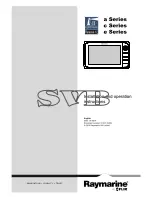
13
14
14a
15
16
17
18
13
Care and maintenance
1.
The webbing lifeline should only be recoiled under tension. On no account should you fully pull out
and release the lifeline, as the jolting impact of the small connector on the device can cause the return
spring to break (
13
).
2.
The webbing lifeline of this device may only be cleaned with soapsuds and a sponge, on no account
use a solvent.
3.
Fall arrestors must be stored in a dry location free of dust and oil, if possible in the packaging supplied.
4.
Textile elements which have become wet during cleaning or use may only be left to dry naturally, i.e.
not in the vicinity of fire or heat sources.
5.
This device must be checked by an approved service agent every 12 months. The effectiveness and
durability of the height safety device depends on regular inspection and maintenance by an approved
service agent.
6.
Before using disinfectants, you have to contact the manufacturer due to the complex legal product
classifications based on the specific applications and constituents.
Horizontal use
Please note
: The fall arresting device has been successfully tested for horizontal application and a fall
over the edge simulated from this. Here an edge radius r = 0.13 mm was used for fall arresting devices with
fastener made from webbing (
14
). Based on this test, the fall arresting device is suitable for use over similar
edges with a radius of r ≥ 0.5 mm (
14a
) according to EN and r ≥ 0.13 mm (
14
) in the USA, as are typically
present on rolled steel profiles,
on wooden beams or on a panelled, rounded fascias. . In addition, wall arresters with wire cable are also
suitable to withstand wear by edges such as that of flexible (non-reinforced) trapezoidal sheet metal, pre-
cast concrete elements or poured-in-place concrete edges. Notwithstanding this test, the following must be
observed at all times or horizontal or inclined use in which the risk of a fall over an edge exists:
1. A risk assessment has to carried out prior to starting work. If the edge over which a fall may occur is a
particularly “cutting” edge and / or is not free of burrs (e.g. uncovered parapet or sharp, reinforced sheet
metal edge) appropriate precautions shall be taken prior to starting work.
- a fall over the edge has to be excluded
and
- the max. working load of the devices for the stress sustained during a fall over edges (
12
) must not
be and
- an edge protector has to be installed prior to starting work
In cases of doubt it is recommended to contact the manufacturer.
2. The anchor point of the fall arrester shall not be below the surface (e.g. platform, flat roof) the person
using the device is standing on (
15
).
3. The required clearance below the edge is shown in Figures
17
.
4. In order to prevent a fall with a swinging movement the working area and the lateral movement from the
centre line have to be limited to max. 1.50m on both sides. In other cases, no single anchor points shall
be used, but e.g. type C / class C anchor devices (only if approved for shared use) or type D / class D
devices according to EN 795.
5. For use of the fall arrester on a type C / class C anchor device according to EN 795 with a horizontally
flexible anchor line the excursion of the anchor device must also be considered when determining the
required clearance underneath the person using the device. The information provided in the instructions
for use and the safety information of the anchor devices have to be observed in this context.
6. In case of a fall over an edge there is a danger of injury during the process of arresting the fall due to
the falling person hitting parts of the building or structure.
7. Special measures for rescue has to be defined and trained for cases of falls over an edge.
8. Fall arresters labelled with Figure
16
are unsuitable for an impact load over unprotected edges (e.g.
retractable lanyards made of Dyneema or stainless steel cables).
9. For the correct distance from the device to the edge in case of horizontal use see the list at the beginning
of these instructions for use (
18
)
Accessories
Please note
: In order to prevent a negative impact on the safe function of the devices, it is only permitted to
use accessories approved by the manufacturer (e.g. rescue clamps to DIN 19428:2018, protective covers,
etc.). The manufacturer is not liable for any accidents involving the life and limb of the user if using non-ap
-
proved accessories.
ENGLISH
Summary of Contents for HWDB 2
Page 4: ...4...
Page 56: ...56 4 5 7 8 D D 2 3 1 2 3 6 D D 1 IKAR...
Page 57: ...57...
Page 58: ...58...
Page 59: ...59...














































